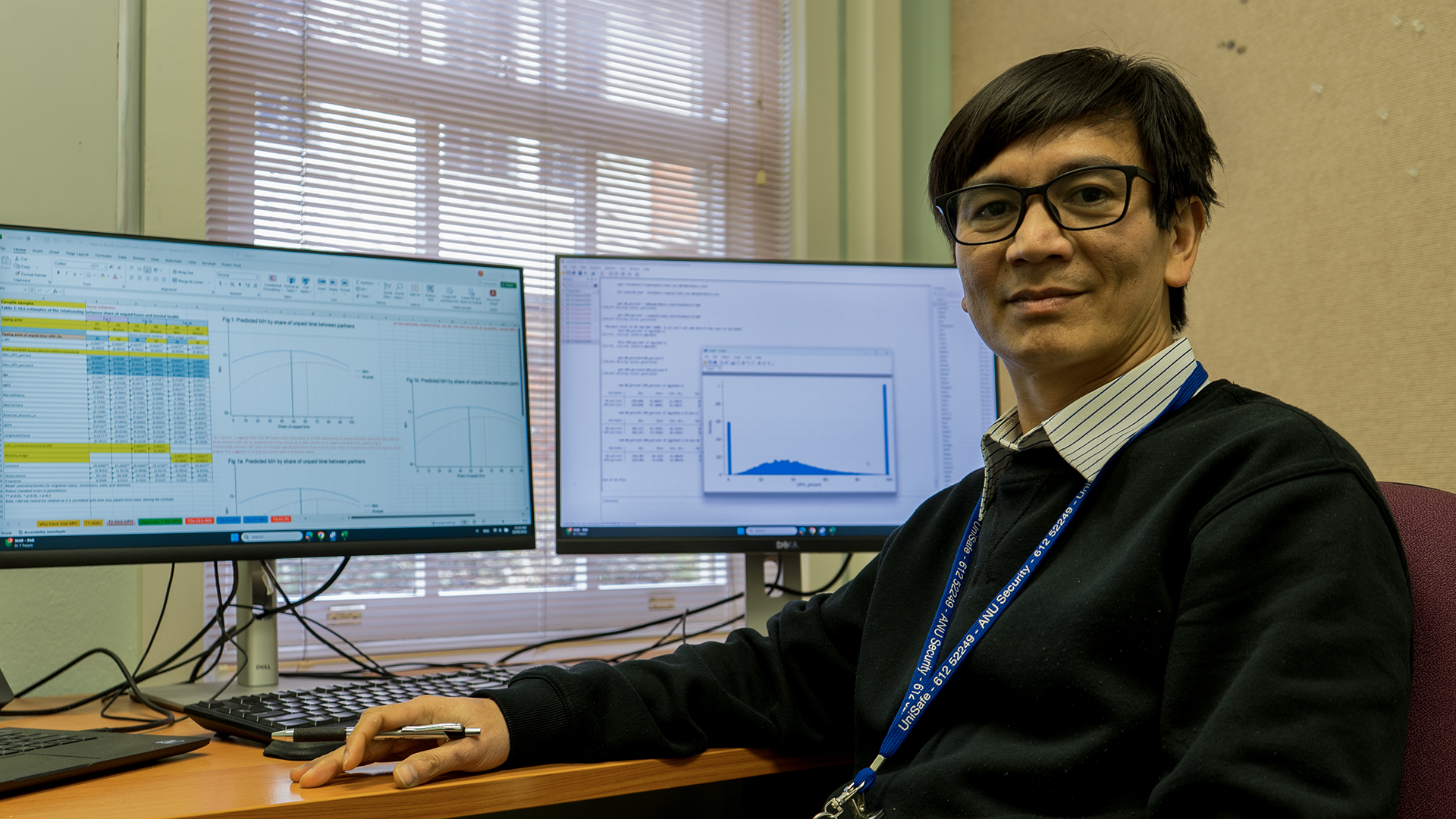Making numbers more meaningful in population health
Every summer, ice cream sales spike – and so do shark attacks. There is certainly a pattern here, but do increased ice cream sales cause more shark attacks, or are other factors driving both?
One way of untangling this problem is econometrics: a combination of maths, statistics, and economic theory to find out the true nature of relationships. In this example, by comparing models that predict shark attacks, an econometrician can show that temperature is a confounding factor, driving both trends.
This type of modelling can be very useful in teasing out trends in population health, too.
“Some population health analysis can be quite simple – you do a clinical trial and compare outcomes. This is straightforward,” says econometrician Dr Tinh Doan at the National Centre for Epidemiology and Population Health (NCEPH). “When it comes to inequality and health outcomes, however, you need to look at the bigger picture.”
“Population health is multidisciplinary – it considers things like sociology, psychology, economics, health behaviour, and people’s relationships with the world around them.”
Being able to quantify the weight of each factor is thus crucial.

One issue that Doan is particularly interested in is the huge difference in smoking prevalence between Indigenous and non-Indigenous Australians.
Doan wants to understand why 41% of Indigenous Australians aged 18 and over are current smokers, compared to only 17% of non-Indigenous Australians.
Existing studies show that financial distress, drinking alcohol, and education level contribute to this difference, and Doan and his colleague’s modelling agreed that these factors go a long way in explaining the difference.
The picture doesn’t end there, though.
The ongoing impacts of colonisation, discrimination, and intergenerational trauma also play an influential role on smoking up-take in Indigenous Australians – where tobacco is often used as a coping mechanism for these stressors.
But exactly how much do these social influences contribute to increased smoking prevalence?
“Colonisation plays an important role in explaining smoking prevalence in Indigenous compared to non-Indigenous populations.” Doan explains.
“Our study found that over half of the total disparity can be explained by these social factors, and we were the first to actually quantify this using econometric modelling.”
“A lot of the time, you see research that claims relationships or associations. But from a policy perspective, a relationship is not enough. A relationship doesn’t mean causality,” says Doan.
Only by identifying causes can policymakers target the real drivers of health problems. In the case of reducing Indigenous smoking, it means making policies specific to the needs of Indigenous populations. Econometrics allows researchers to demonstrate just how important these policies will be, because modelling can quantify the significance of social and cultural barriers to quitting and uptake reduction.
Doan uses his mathematical and modelling skills in diverse collaborations, studying child stunting and academic performance in Ethiopia, household alcohol consumption and children’s education, and links between time use, health behaviours, economic and health outcomes, and gender inequality.
Recently, with Professor Lyndall Strazdins, a leading researcher in work, family and wellbeing, Doan quantified how the unequal division of unpaid household labour between men and women impacts women’s health and earning potential.
Drawing on the “linked lives theory”, which emphasises the interconnected nature of human lives, he demonstrates that women disproportionately shoulder unpaid domestic work, effectively subsidising men’s time, which in turn negatively impacts women’s health behaviours— such as physical exercise—and earning potential.
With system modelling, his research moves beyond conventional approaches that primarily attribute gender disparities to discrimination and offers a deeper structural explanation rooted in household-level time allocation.
These studies involve the same ‘bigger picture’ thinking about social norms and policies. According to Strazdins, econometric modelling allows them to create models that better reflect reality.

“Most research struggles to model the exchange and the trade-offs they embed, but simply models them as an individual property. They are rarely just that—and his work has shown how the terms of these trade-offs are part of the health inequality,” says Strazdins.
She adds, “Tinh understands that health is both an outcome of unfairness, and lost opportunities and resources. He can show the different to-and-fro between the health, and the social harms it is driven by and in turn creates. It’s something population health really needs to be able to understand, articulate, and then advocate for,” she adds.
Econometric modelling is an important tool in identifying—and more importantly, quantifying—these underlying causes and systems driving health disparities. In Doan’s hands, it turns numbers into meaningful insights, provides a platform to base evidence-based advocacy on and paves a pathway to healthier and more equal societies.
